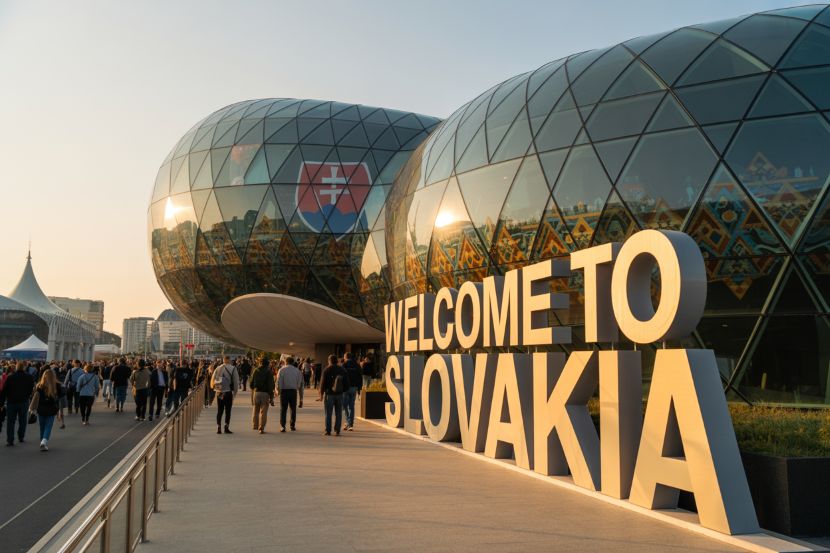
Published on
September 24, 2025

India and Japan are taking bold steps to enhance bilateral tourism by focusing on key initiatives aimed at promoting cultural heritage, fostering educational exchanges, and improving air connectivity between the two nations. This renewed effort is designed to strengthen their tourism ties, with particular emphasis on promoting India’s renowned Buddhist sites to Japanese tourists, encouraging more Japanese students to visit India for educational purposes, and streamlining travel between the two countries through expanded flight options. These strategic moves are set to boost tourism by offering new opportunities for cultural and educational engagement, while also making travel more accessible and convenient for visitors from both countries.
India and Japan are embarking on a renewed effort to bolster bilateral tourism, with a particular focus on enhancing connectivity, promoting cultural heritage, and fostering educational exchanges. Key initiatives discussed during a recent meeting included the promotion of India’s Buddhist sites to Japanese tourists, increasing student visits from Japan to India, and improving air connectivity between the two nations.
The high-level discussions were co-chaired by Mugdha Sinha, Director General of the Ministry of Tourism, India, and Haraikawa Naoya, Commissioner of the Japan Tourism Agency (JTA). Both sides were represented by government officials and key stakeholders from the tourism and travel industries, including airline representatives, tourism associations, and other relevant institutions.
On the Japanese side, prominent organizations such as the Japan National Tourism Organization (JNTO), the Japan Association of Travel Agents (JATA), and Japan Airlines were actively involved in the conversation. Meanwhile, the Indian delegation included representatives from the Ministry of External Affairs, Ministry of Civil Aviation, Ministry of Education, and private sector entities like the Indian Association of Tour Operators (IATO), Outbound Tour Operators Association of India (OTOAI), and the Association of Buddhist Tour Operators (ABTO).
The discussions were centered on exploring new investment avenues in the tourism sector, with an emphasis on strengthening existing collaborations between India and Japan. One of the major points highlighted was the promotion of India’s rich Buddhist heritage to attract Japanese tourists. India is home to some of the most revered Buddhist sites in the world, including Bodh Gaya, Sarnath, and Kushinagar, which draw thousands of Japanese pilgrims and tourists every year. The Indian delegation emphasized the importance of creating customized tourism packages that cater to Japanese visitors interested in these cultural and spiritual destinations.
In addition to cultural tourism, the meeting also focused on educational exchanges, particularly encouraging Japanese students to visit India. The potential for strengthening ties in education, especially in the fields of Buddhism and Indian culture, was seen as a significant avenue for collaboration. Both countries agreed that facilitating more student visits would foster mutual understanding and deepen people-to-people connections.
A key topic of discussion was the improvement of air connectivity between the two countries, which is essential for facilitating smoother travel and increasing tourism flows. Indian and Japanese officials emphasized the need to expand flight options, reduce travel times, and ensure affordable options for travelers. Japan Airlines and Air India, alongside other airlines, were encouraged to explore more direct routes and increase flight frequencies to meet growing demand from both tourist and business travelers.
Another critical component of the discussions was analyzing the profile of tourists traveling between India and Japan. The co-chairs and their teams shared valuable insights and data about travel patterns, including the growing number of Japanese tourists visiting India’s Buddhist sites and other cultural landmarks. They discussed strategies to attract a new generation of millennial travelers, who are more inclined to seek authentic cultural experiences and immersive travel opportunities. This demographic shift has led both countries to focus on adapting tourism offerings to meet the expectations of younger, tech-savvy tourists, who prefer more personalized, sustainable, and unique travel experiences.
In this regard, both sides agreed on the importance of leveraging technology to enhance the travel experience, such as through digital marketing campaigns, virtual reality tours, and mobile apps that provide detailed information about destinations. Both Japan and India also pledged to explore new ways to make their destinations more accessible, sustainable, and inclusive for travelers from all walks of life, ensuring that tourism growth benefits local communities while preserving cultural heritage and natural landscapes.
The meeting also emphasized the need to cultivate partnerships between private sector companies in both nations. Several Japanese and Indian tourism agencies expressed interest in collaborating on joint marketing campaigns and investment opportunities aimed at boosting tourism. This includes developing new products and services that will make travel between the two countries more attractive, such as bespoke travel itineraries, unique cultural experiences, and educational tours.
Both delegations also explored opportunities for collaboration in tourism infrastructure development, particularly around high-demand sites like Bodh Gaya and Sarnath. The Indian government has already taken steps to enhance the accessibility of these destinations by improving transportation, facilities, and services for foreign tourists. The Japanese side expressed interest in supporting such initiatives through investment and expertise, particularly in areas like sustainable tourism development, hospitality services, and eco-friendly tourism practices.
As part of the discussions, both sides also explored the potential for joint tourism promotion at international trade fairs and exhibitions. They agreed to collaborate on showcasing their tourism offerings at prominent events in both countries and beyond. This would increase visibility for both nations’ tourism industries and attract more international travelers, especially from regions like Southeast Asia, which is emerging as a key source market for both India and Japan.
The meeting concluded with a commitment to deepen bilateral cooperation in tourism, with both countries agreeing to establish a joint task force to follow up on the discussions and implement the initiatives proposed. The task force will focus on identifying specific areas for collaboration, such as air travel, tourism infrastructure, and cultural exchanges, and will work to ensure that the goals set during the meeting are met in a timely and efficient manner.
India and Japan are strengthening their bilateral tourism ties by focusing on promoting cultural heritage, expanding educational exchanges, and improving air connectivity. These initiatives aim to increase tourism flows, foster deeper cultural understanding, and make travel between the two nations more accessible.
The recent dialogue between India and Japan marks an important step toward fostering stronger tourism ties between the two nations. By focusing on cultural heritage, educational exchanges, and improved air connectivity, both countries are laying the foundation for a new era of collaboration in tourism, with a strong emphasis on sustainable, mutually beneficial growth.
link






